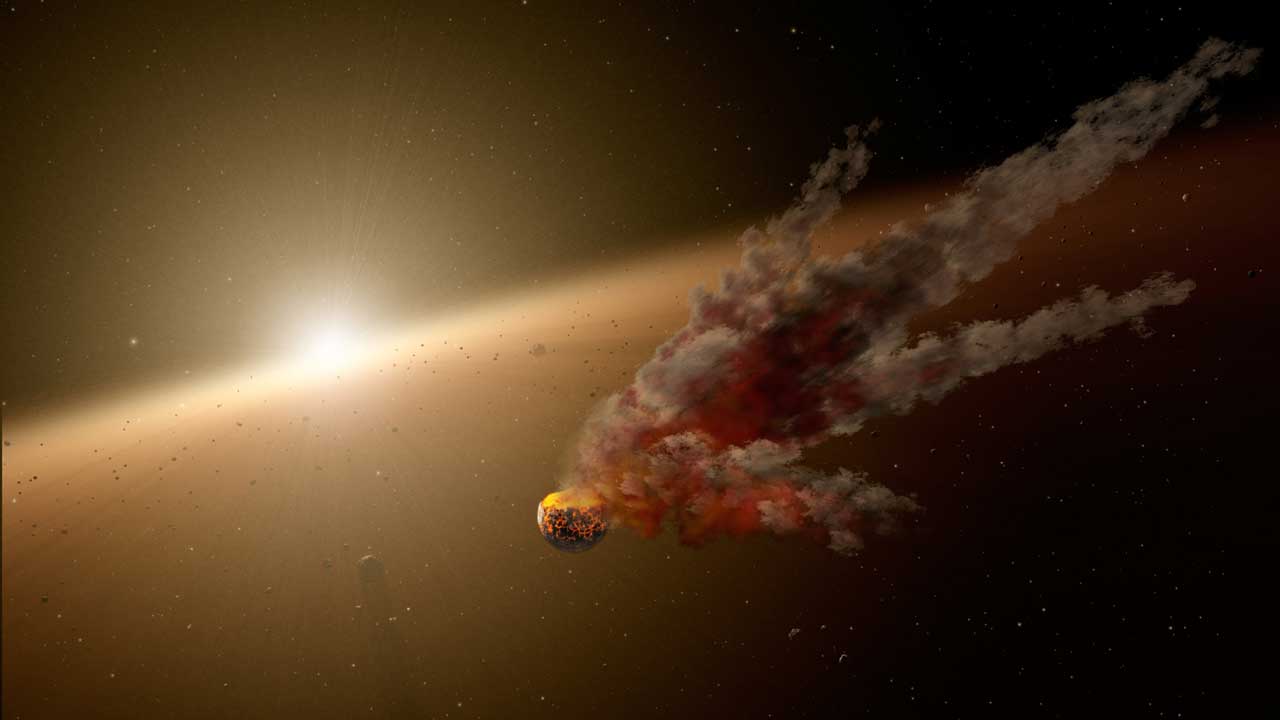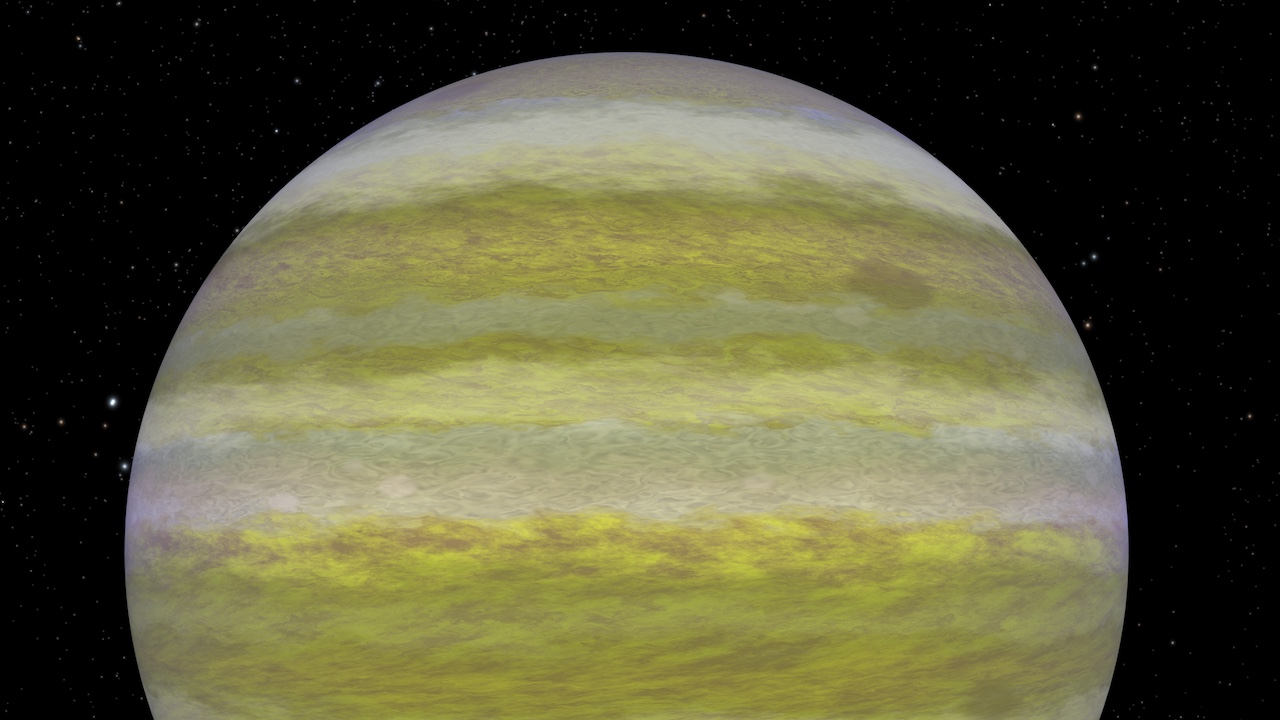8 min read
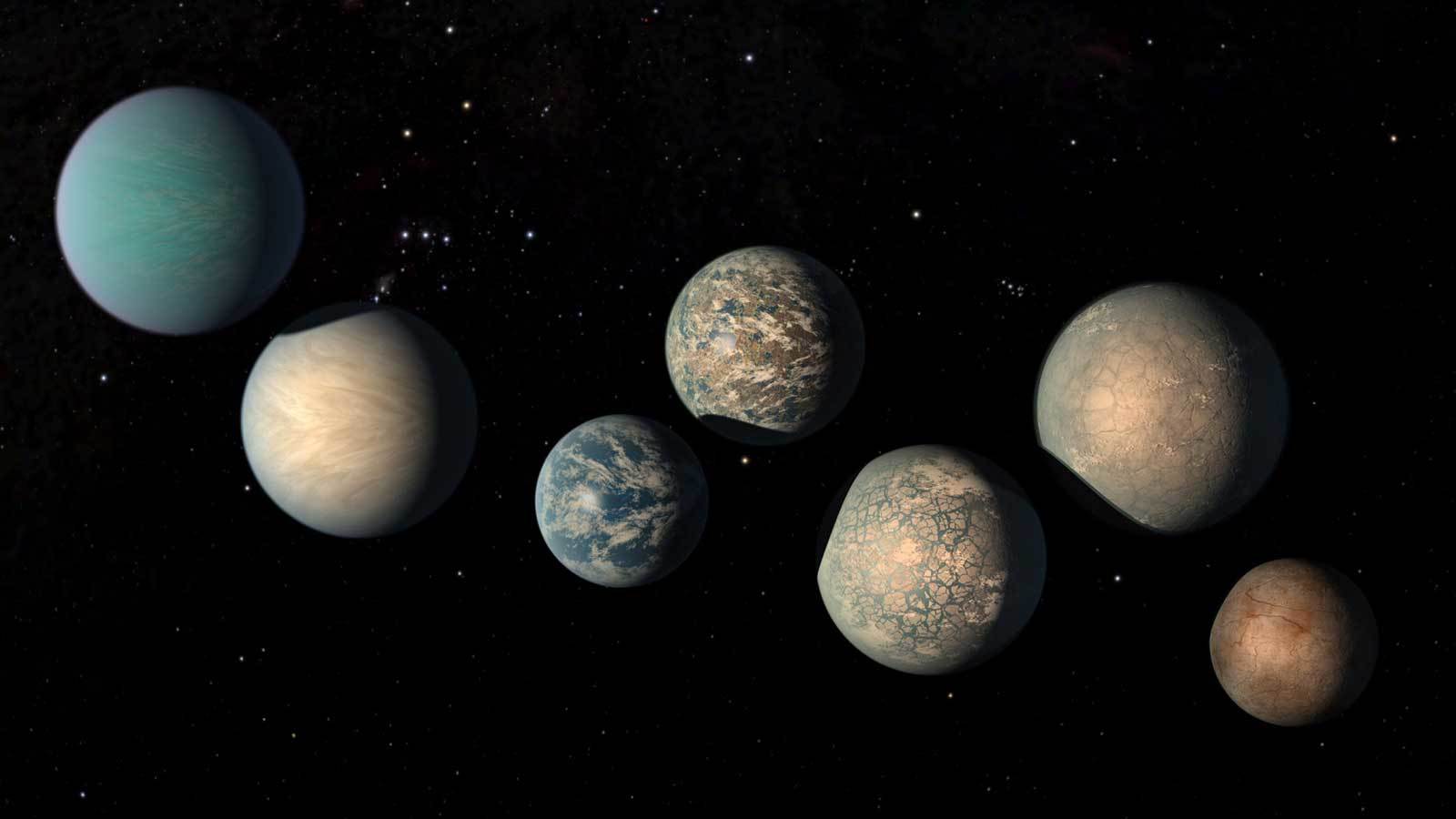
Initially scheduled for a 2.5-year primary mission, NASA’s Spitzer spacecraft has gone above and beyond since its launch in 2003. The space telescope was designed to explore our universe with infrared vision and has been used to discover amazing worlds, and to tell us more about them.
On Jan. 30, 2020, Spitzer’s mission will end. The spacecraft will be switched off, remaining in orbit around the Sun, trailing far (and safely) behind Earth. The engineers and scientists behind Spitzer did not have exoplanet science in mind when they designed the observatory back in the 1990s, but thanks to its extraordinary stability, and a series of engineering reworks after launch, Spitzer’s observational powers were utilized far beyond its original limits and expectations. Here are 10 examples of Spitzer's exoplanet discoveries.
Exoplanet science was in its infancy when Spitzer launched, so original mission planners didn’t anticipate that exoplanet science would become a major focus. But the telescope’s accurate star-targeting system and infrared vision are invaluable tools in this field.
In May 2009, scientists using data from Spitzer produced the first-ever "weather map" of an exoplanet. This exoplanet weather map charted temperature variations over the surface of a giant gas planet, HD 189733b. The study also revealed that roaring winds likely whip through the planet's atmosphere.
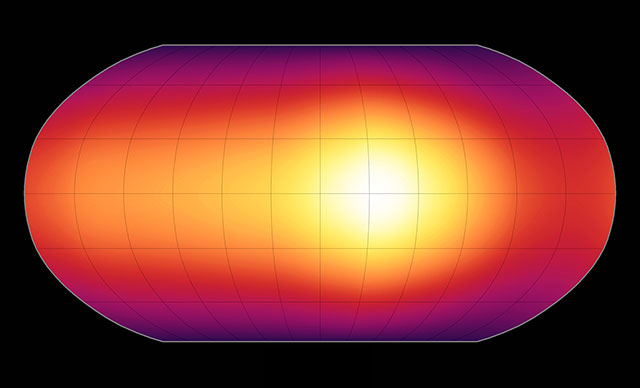
Seven Earth-size planets orbit the star known as TRAPPIST-1. The largest batch of Earth-size planets ever discovered in a single system, this amazing planetary system inspired scientists and non-scientists alike. Three of the planets sit in the "habitable zone" around the star, where temperatures might be right to support liquid water on a planet's surface. The discovery represents a major step in the search for life beyond Earth.
Scientists observed the TRAPPIST-1 system for over 500 hours with Spitzer to identify five of the new planets orbiting the star (two were already known). The telescope's infrared vision was ideal for studying the small, dim and red TRAPPIST-1 star, which is much cooler than our Sun. Spitzer's observations helped us understand the size and mass of these planets.
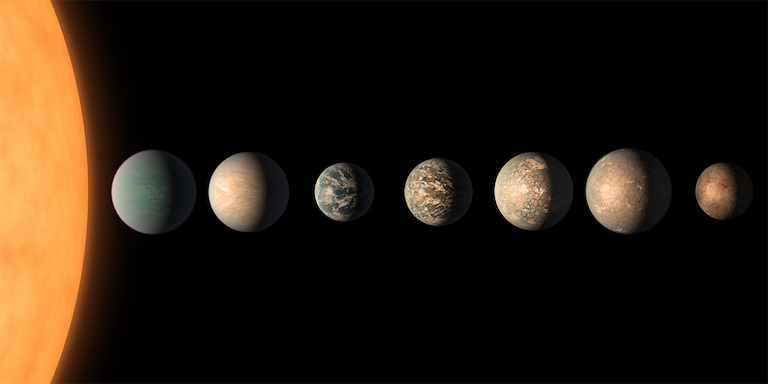
In 2010, Spitzer helped scientists detect one of the most remote planets ever discovered, about 13,372 light-years away from Earth. Most previously known exoplanets lie within 1,000 light-years of Earth.
Spitzer accomplished this task with the help of a ground-based telescope and a technique called microlensing (an effect first predicted by Albert Einstein 100 years ago). This approach relies on gravitational lensing, in which light is bent and magnified by gravity. When a star passes in front of a more distant star, as seen from Earth, the foreground star's gravity can bend and magnify the light from the background star. If a planet orbits the foreground star, the planet's gravity contributes to the brightness and leaves a distinctive imprint on the magnified light.
The discovery of OGLE-2014-BLG-0124Lb provides one more clue for scientists who want to know if the population of planets is similar throughout different regions of the galaxy.
Scientists also used Spitzer and microlensing to tell us more about far-off exoplanets. In 2017, scientists used Spitzer and the Korea Microlensing Telescope Network (KMTNet), operated by the Korea Astronomy and Space Science Institute, to track a microlensing event and discover a new planet with the mass of Earth, orbiting its star at the same distance that we orbit our Sun. OGLE-2016-BLG-1195Lb is likely far too cold to be habitable for life as we know it, however, because its star is so much fainter than our Sun. But the discovery adds to scientists' understanding of the types of planetary systems that exist beyond our own.
OGLE-2016-BLG-1195Lb is 12,752 light-years away and orbits a star so small, scientists aren't sure if it's a star at all. It could be a brown dwarf, a star-like object whose core is not hot enough to generate energy through nuclear fusion. This particular star is only 7.8 percent the mass of our Sun, right on the border between being a star and not.
Astronomers using data from the Spitzer and Kepler space telescopes created the first cloud map of a planet beyond our solar system, a sizzling, Jupiter-like world known as Kepler-7b.
The planet is marked by high clouds in the west and clear skies in the east. Previous studies from Spitzer showed exoplanet temperature maps, but this was the first look at cloud structures on a distant world. Kepler was used to discover the planet and create a rough map that showed a bright spot on its western hemisphere.
Spitzer's ability to detect infrared light meant it was able to measure Kepler-7b's temperature, estimating it to be between 1,500 and 1,800 degrees Fahrenheit (1,100 and 1,300 Kelvin). This is relatively cool for a planet that orbits so close to its star. Scientists determined that light from the planet's star is bouncing off cloud tops its west side. The findings were an early step toward using similar techniques to study the atmospheres of exoplanets more like Earth in composition and size.
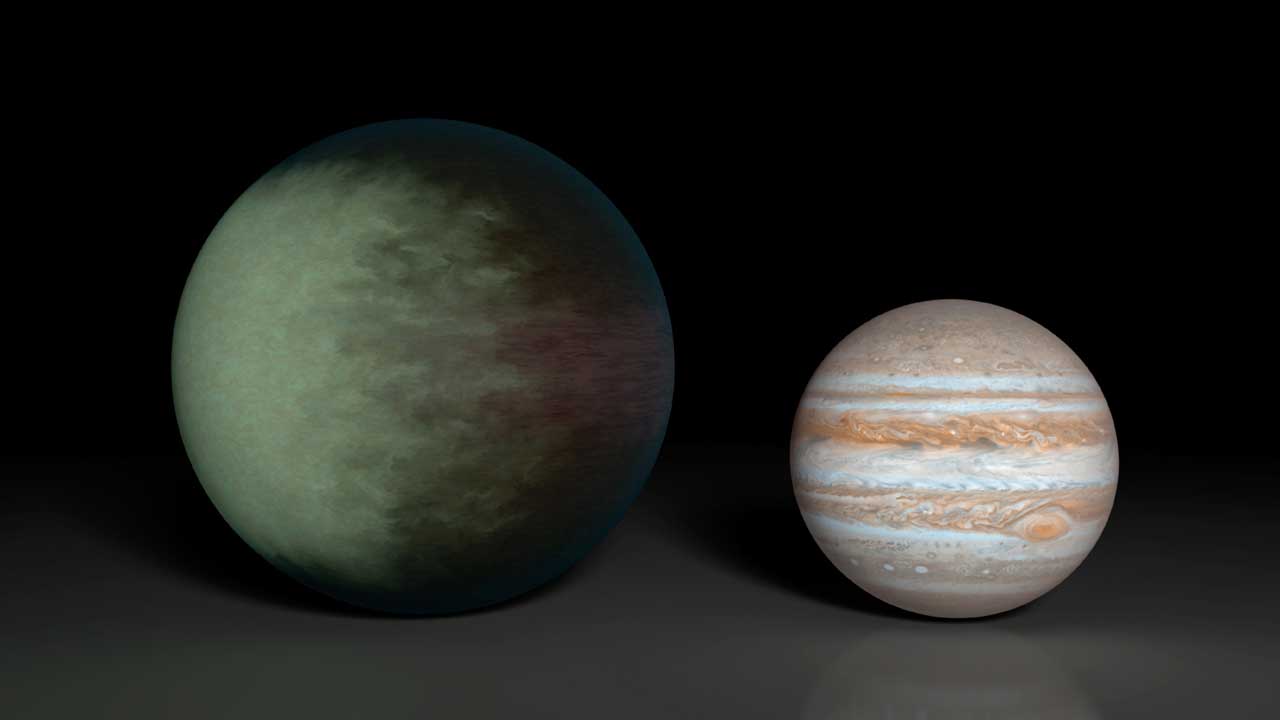
Eighty hours of observations from Spitzer led to the first temperature map of a super-Earth – a rocky planet nearly two times as big as ours. The map revealed extreme temperature swings from one side of the planet 55 Cancri e to the other, and hinted at an ocean of lava across the surface.
In this case, 55 Cancri e was found to have dramatically different temperatures on each of its sides (the planet is tidally locked, so one side, the day side, always faces the star). The day side of the planet is nearly 4,400 degrees Fahrenheit (2,700 Kelvin), and the “cooler,” night side is 2,060 degrees Fahrenheit (1,400 Kelvin).
In 2007, Spitzer for the first time captured enough light from two exoplanets to identify molecules in their atmospheres. It was a landmark achievement.
Astronomers used Spitzer's spectrograph to obtain infrared spectra for two hot Jupiters using the "secondary eclipse" technique. In this method, the spectrograph first collects the combined infrared light from the planet plus its star, then, as the planet is eclipsed by the star, the infrared light of just the star. Subtracting the latter from the former reveals the planet's own rainbow of infrared colors.
Spitzer revealed that HD 209458b and HD 189733b are drier and cloudier than predicted. Theorists thought hot Jupiters would have lots of water in their atmospheres, but surprisingly none was found. A mystery!
One of the planets, HD 209458b, showed hints of tiny sand grains, called silicates, in its atmosphere. This could mean the planet's skies are filled with high, dusty clouds unlike anything seen around planets in our own solar system.
Because Spitzer looks at targets in infrared, it was able to help confirm and refine discoveries from other spacecraft. Take Kepler-10c for instance. That planet was first identified by Kepler, and later validated using a combination of Spitzer and a computer simulation technique called "Blender." Both of these methods proved powerful to validate Kepler planets that are too small and far away for ground-based telescopes to confirm.
Spitzer is also a great partner with the Hubble Space Telescope. In 2015, an international team of astronomers undertook the largest ever study of hot Jupiters, exploring and comparing 10 planets, including HD 209458b and HD 189733b, with Spitzer and Hubble in a bid to understand their atmospheres. The team was able to discover why some of these worlds seem to have less water than expected. The team’s models revealed that, while apparently cloud-free exoplanets showed strong signs of water, the atmospheres of those hot Jupiters with faint water signals also contained clouds and haze — both of which are known to hide water from view. Mystery solved!
Spitzer used its infrared vision to observe the dust of six dead "white dwarf" stars littered with the remains of shredded asteroids. Asteroids are leftover scraps of planetary material. They form early in a star's history when planets are forming out of collisions between rocky bodies. When a star like our Sun dies, its core shrinks to a skeleton of its former self called a white dwarf, and its asteroids get jostled about. If one of these asteroids gets too close to the white dwarf, the white dwarf's gravity will chew the asteroid up, leaving a cloud of dust.
Spitzer found that the dust contains a glassy silicate mineral called olivine, commonly found on Earth. The results suggest that the same materials that make up Earth and our solar system's other rocky bodies could be common in the universe. If the materials are common, then rocky planets could be, too.
Spitzer later saw an eruption of dust around a young star, possibly the result of a smashup between large asteroids. Scientists had been regularly tracking the star, NGC 2547-ID8, when it surged with a huge amount of fresh dust between August 2012 and January 2013. Spitzer saw the warm glow of the dust in infrared, and its observations give us a glimpse into the violent process to tell us more about the formation of rocky planets like Earth.
